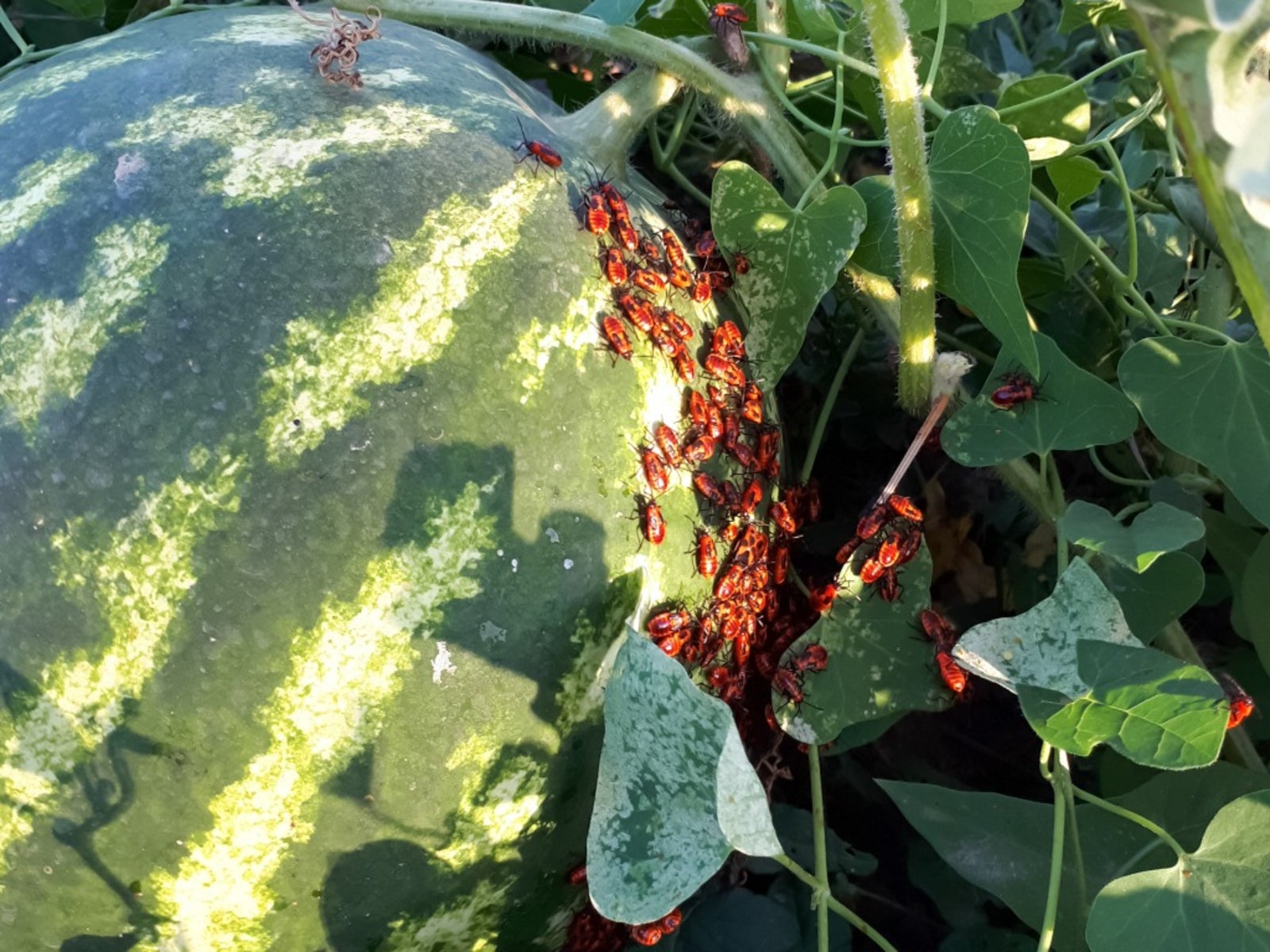Watermelon Pest Control: Tips On Treating Watermelon Plant Bugs


Watermelons are fun fruits to grow in the garden. They're easy to grow and no matter what variety you pick, you know you're in for a real treat-- that is until you find watermelon plant bugs. Unfortunately, bugs on watermelon plants aren't an uncommon problem, but many of them are very easy to dispatch with a little dedication and know how. Read on to discover some tips and tricks to watermelon pest control.
Insect Pests of Watermelon
Although there are many, many insects that would love to take a bite out of your melons, some are more common visitors to the garden than others. Effectively controlling watermelon pests requires that you understand exactly what is eating your plants so you can nab the culprit and not hurt the beneficial insects that are trying to aid your cause. Keep an eye out for these offenders next time you're in the garden:
- Aphids - Tiny and appearing in nearly any color you can imagine; aphids do an amazing amount of damage for their size. Colonies suck the juices from your watermelon's leaves and excrete a sticky residue that may attract sooty mold. You can treat aphids without chemicals if you just focus a hose on them daily until their numbers are beaten back. If you're leaving the hard chemicals out of the garden, you'll have plenty of predators around to take out the stragglers.
- Armyworms - Armyworms spell big trouble if they're in your garden. Unlike other caterpillars, armyworms feed as a group for most of their lives, quickly skeletonizing leaves and scarring fruits. Like any caterpillars, they can be hand-picked when they're out feeding, but if your armyworm problem is pretty severe, you may be better off applying Bacillus thuringiensis (Bt) or spinosad to your watermelon plants.
- Cucumber Beetles - These bugs don't even try to hide their damage to your watermelon patch, and often feed openly on leaves and flowers. If your watermelons are working on setting fruits, they're probably old enough to tolerate a great deal of cucumber beetle damage, but if the beetles start eating the flowers, you may want to dedicate some time to spraying them with insecticidal soap and hand-picking any bugs you see. Next season, use a floating row cover over your watermelons before cucumber beetles appear to help prevent problems.
- Leaf miners - Leaf miners create some of the most dramatic-looking damage in the garden without actually harming most plants. Watermelon leaves will look as if something has painted white, wandering lines across their surfaces and may have white blotches to go along with these tunnels. They look terrible but rarely cause serious problems, so try not to worry about leaf miner activity. If it bothers you and is limited to a few leaves, you can always pick them off.
- Spider Mites - They're not technically bugs, but spider mites are frequent garden visitors. These almost invisible arachnids use piercing mouthparts to suck the juices right out of watermelon leaves, causing tiny yellow dots to appear all over affected leaf surfaces. Spider mites also spin thin bits of silk as they feed, making it easy to identify the culprit. Treat spider mites with neem oil weekly until your plants are happy and healthy again.
Gardening tips, videos, info and more delivered right to your inbox!
Sign up for the Gardening Know How newsletter today and receive a free copy of our e-book "How to Grow Delicious Tomatoes".

Kristi Waterworth was a regular contributor to Gardening Know How for many years, answering countless queries on plant pests and diseases.
-
 Grow ‘Karl Rosenfield’ Peony Plants For The Ultimate Frilly Border Beauties And Cut Flowers
Grow ‘Karl Rosenfield’ Peony Plants For The Ultimate Frilly Border Beauties And Cut FlowersFor frilly double magenta peony petals infused with a heady fragrance, grow ‘Karl Rosenfield’ peony plants. Here’s how to cultivate the ultimate plushy blooms
By Tonya Barnett
-
 10 Common Composting Problems That Can Spoil Your Garden Gold – Plus Easy Fixes
10 Common Composting Problems That Can Spoil Your Garden Gold – Plus Easy FixesLearn how to troubleshoot common composting issues before they ruin your stash – from bad smells and bugs to materials not breaking down as they should.
By Susan Albert